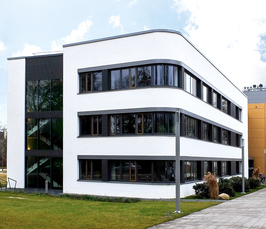Femtosecond Infrared Spectroscopy of Photoinduced Intermolecular H+ Transport
- PC Department Online Seminar
- Date: Apr 20, 2022
- Time: 11:00 AM (Local Time Germany)
- Speaker: Marius-Andrei Codescu
- Max Born Institute, Berlin
- Host: Chris Nicholson

This bifunctional character is due to its molecular structure, which consists of both an H+-donor (acidic) –OH group and a H+-acceptor (basic) nitrogen lone pair. Previous findings reported on the photoinduced reaction of 7HQ in water/methanol mixtures have shown that H+ transport proceeds from the quinoline nitrogen lone pair to –OH group via a hydroxide/methoxide (HO-/CH3O-) transport mechanism or Pathway II 1 at time intervals ranging from hundreds to tens of picoseconds. This implies 7HQ converts from an initially photoexcited neutral (N∗) to a zwitterionic (Z∗) tautomer, where the cationic (C∗) is the intermediate charged species.
Here, we used the formate anion (HCOO-) as the H+ acceptor to quantitatively switch the H+ transport dynamics from proton vacancy transport (Pathway II) to excess proton transport mechanism (Pathway I). At high molar concentrations, Pathway I prevails and about 85% of N∗ are converted into the anionic (A∗) species, implying unequivocally that HCOO- converts into conjugate formic acid (HCOOD). We find that H+ transport rates are governed by “tight” (contact) and “loose” (solvent-separated) acid-base reactive pairs 2. Still, HCOOD is not suitable for rapidly mediating H+ transport from –OH group to the nitrogen lone pair. We further used imidazole to solve this issue. Free-energy relationships of 7HQ with imidazole in methanol solutions, along with analysis of femtosecond UV-pump/IR-probe results and spatial distribution functions of molecules reveal that Pathway I is predominant and, in addition, the overall yield of N∗ → A∗ → Z∗ increases substantially, when compared to both HCOO- (H+ transport is 4 X faster) and bulk solvent solutions (H+ transport is 2.4 X faster)3.
Our study is relevant to the H+ transport mechanisms in water-free proton-exchange membrane fuel cells (PEMFCs) or any other confined systems with well-defined start and end points for H+ transport.
(1) M. Ekimova et al., J. Am. Chem. Soc. 141, 14581–14592 (2019)
(2) M.-A. Codescu et al., J. Phys. Chem. A 125, 1845–1859 (2021)
(3) M.-A. Codescu et al., in preparation (2022)
Join Zoom Meeting
https://zoom.us/j/99525372034?pwd=WU1HSXJadkhTa2dFNWx5K0tzdEJqUT09
Meeting-ID: 995 2537 2034
Passcode: 910473